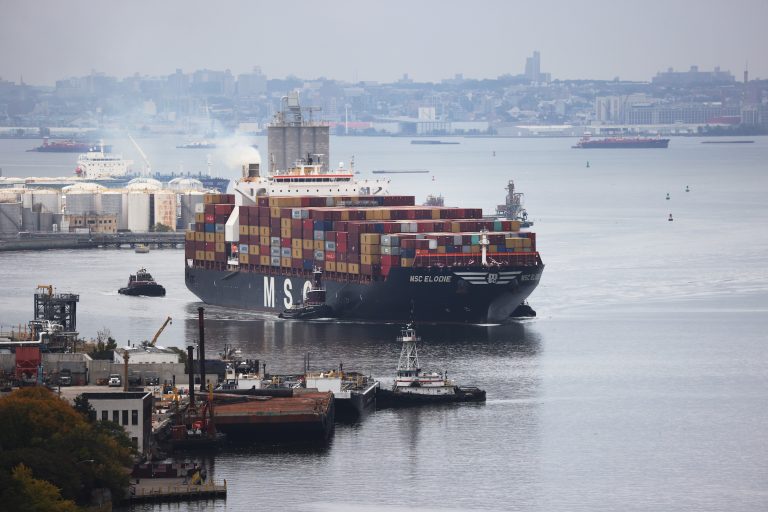Online shopping has not only changed people’s traditional way of shopping but also spurred the booming development of the logistics industry. Due to its transportation advantages, New Jersey has witnessed an explosive growth of logistics warehouses, which has raised concerns among industry insiders.
Recently, at an online seminar on logistics warehouses, Lee Clark, a council member from Phillipsburg, Warren County, New Jersey, notes that New Jersey is located between the major population centers of New York City and Philadelphia. With three major ports in New Jersey, cargo ships can quickly transport goods to logistics warehouses for storage or transshipment via large trucks, making it attractive to warehouse developers. This is one of the reasons why the number of logistics warehouses in New Jersey has been increasing in recent years.
In the past decade, logistics warehouses and distribution centers have sprung up like mushrooms near major exits of the New Jersey Turnpike and Interstate 287, even in some relatively remote areas.
According to a report released by the non-profit organization NJfuture, New Jersey has three major ports: Newark, Elizabeth, and Bayonne. The Port of New York and New Jersey is the second busiest port in the United States, second only to the Port of Los Angeles-Long Beach in California.
As of 2018, nearly one-eighth of New Jersey’s employees (12.2 percent of all workers) were employed in wholesale trade or transportation and warehousing. It is reported that e-commerce giant Amazon is now the largest private employer in New Jersey, adding nearly 7,000 new jobs in 2020 alone, with 49,000 employees in New Jersey in 2022.
Success
You are now signed up for our newsletter
Success
Check your email to complete sign up
The Internet has spurred the rapid development of e-commerce and has also driven the growth of the logistics warehouse market, a trend that is far from over. According to media reports, 150 logistics warehouses with a total floor area of 88 million square feet will be built along the Delaware River.
A report from Delaware Currents stated that half of the approved or planned 88 million square feet of logistics warehouses are concentrated in Burlington, Salem, Gloucester, Warren, and Mercer counties.
According to the Delaware Currents report, in the past two years, the planned warehouse area in Warren County has exceeded 13 million square feet, a possible increase of 185 percent. State data shows that from 2017 to 2021, Warren County allowed approximately 4.6 million square feet of storage space.
Logistics warehouses in Salem County, located south of Camden and across the river from Wilmington, Delaware, have increased from the allowed 2.9 million square feet of storage space to 18.4 million square feet, a growth of 522 percent.
The explosive growth of logistics warehouses has raised concerns among industry insiders. Some activists are worried that the explosive growth of logistics warehouses may cause irreparable harm, such as water and soil pollution, loss of natural habitats and farmland, air pollution caused by diesel trucks traveling to and from warehouses, loss of community character, increased wear and tear on roads and infrastructure, potentially higher traffic fatalities, light and noise pollution, loss of open space, and damage to aesthetics.
Stacey Fox, the Executive Director of the Mercer County Defense League, said, “The place we used to call the Garden State is now being called the Logistics State.” He urged residents to pressure their elected leaders to find remedies for the growing issue.














